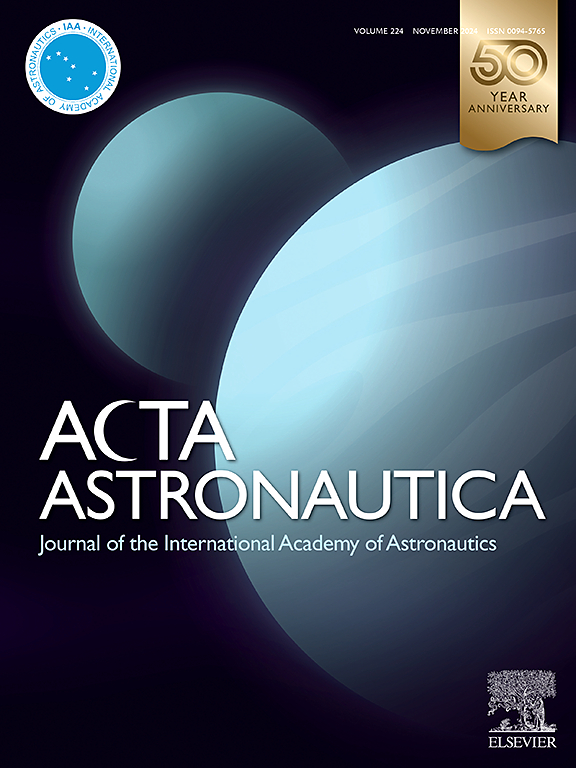DIANA:水下模拟太空任务
IF 3.1
2区 物理与天体物理
Q1 ENGINEERING, AEROSPACE
引用次数: 0
摘要
DIANA 任务是一项水下模拟空间任务,旨在模拟和研究长期太空飞行和地外居住对乘员表现、社会心理动态和技术系统的影响。这次任务利用一个水下栖息地--Hydronaut H03 DeepLab--来模拟孤立、封闭和极端(ICE)的太空环境。在八天时间里,六名机组人员在水下(3 个)和水面(3 个)栖息地生活和工作,执行科学实验和操作任务。任务安排包括各种活动,如无人机探索、舱外活动(EVA)、土壤取样和媒体互动,最后是模拟离开月球表面。数据收集方法包括持续的生物医学监测、认知任务评估以及分析团队交流与合作的社会绘图。本文概述了这次任务的结构和成果,对未来人类太空探索的挑战提供了宝贵的见解,并为改进乘员选拔、培训和支持系统提供了信息。本文章由计算机程序翻译,如有差异,请以英文原文为准。
DIANA: An underwater analog space mission
The DIANA mission represents an underwater analog space mission designed to simulate and study the impact of long-duration spaceflight and extraterrestrial habitation on crew performance, psychosocial dynamics, and technological systems. The mission utilized an underwater habitat, the Hydronaut H03 DeepLab, to mimic the isolated, confined, and extreme (ICE) environment of space. Over eight days, a six-member crew lived and worked in underwater (3) and water surface (3) habitats, performing scientific experiments and operational tasks. The mission schedule encompassed a variety of activities such as drone exploration, extravehicular activities (EVAs), soil sampling, and media interactions, culminating in a simulated departure from the lunar surface. Data collection methods included continuous biomedical monitoring, cognitive task assessments, and sociomapping to analyze team communication and cooperation. This paper provides an overview of the mission architecture and outcomes, offering valuable insights into the challenges of future human space exploration and informing improvements in crew selection, training, and support systems.
求助全文
通过发布文献求助,成功后即可免费获取论文全文。
去求助
来源期刊

Acta Astronautica
工程技术-工程:宇航
CiteScore
7.20
自引率
22.90%
发文量
599
审稿时长
53 days
期刊介绍:
Acta Astronautica is sponsored by the International Academy of Astronautics. Content is based on original contributions in all fields of basic, engineering, life and social space sciences and of space technology related to:
The peaceful scientific exploration of space,
Its exploitation for human welfare and progress,
Conception, design, development and operation of space-borne and Earth-based systems,
In addition to regular issues, the journal publishes selected proceedings of the annual International Astronautical Congress (IAC), transactions of the IAA and special issues on topics of current interest, such as microgravity, space station technology, geostationary orbits, and space economics. Other subject areas include satellite technology, space transportation and communications, space energy, power and propulsion, astrodynamics, extraterrestrial intelligence and Earth observations.
 求助内容:
求助内容: 应助结果提醒方式:
应助结果提醒方式:


